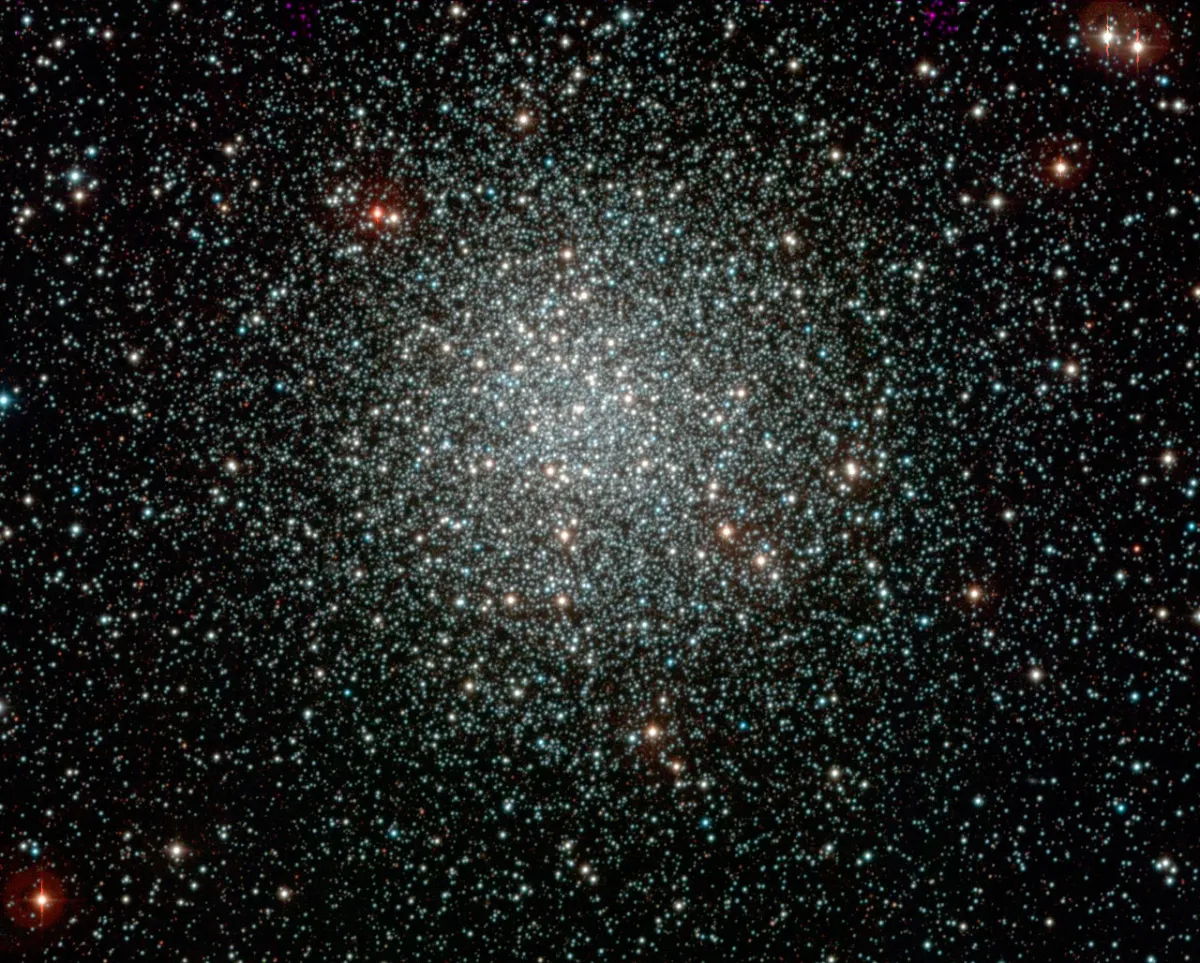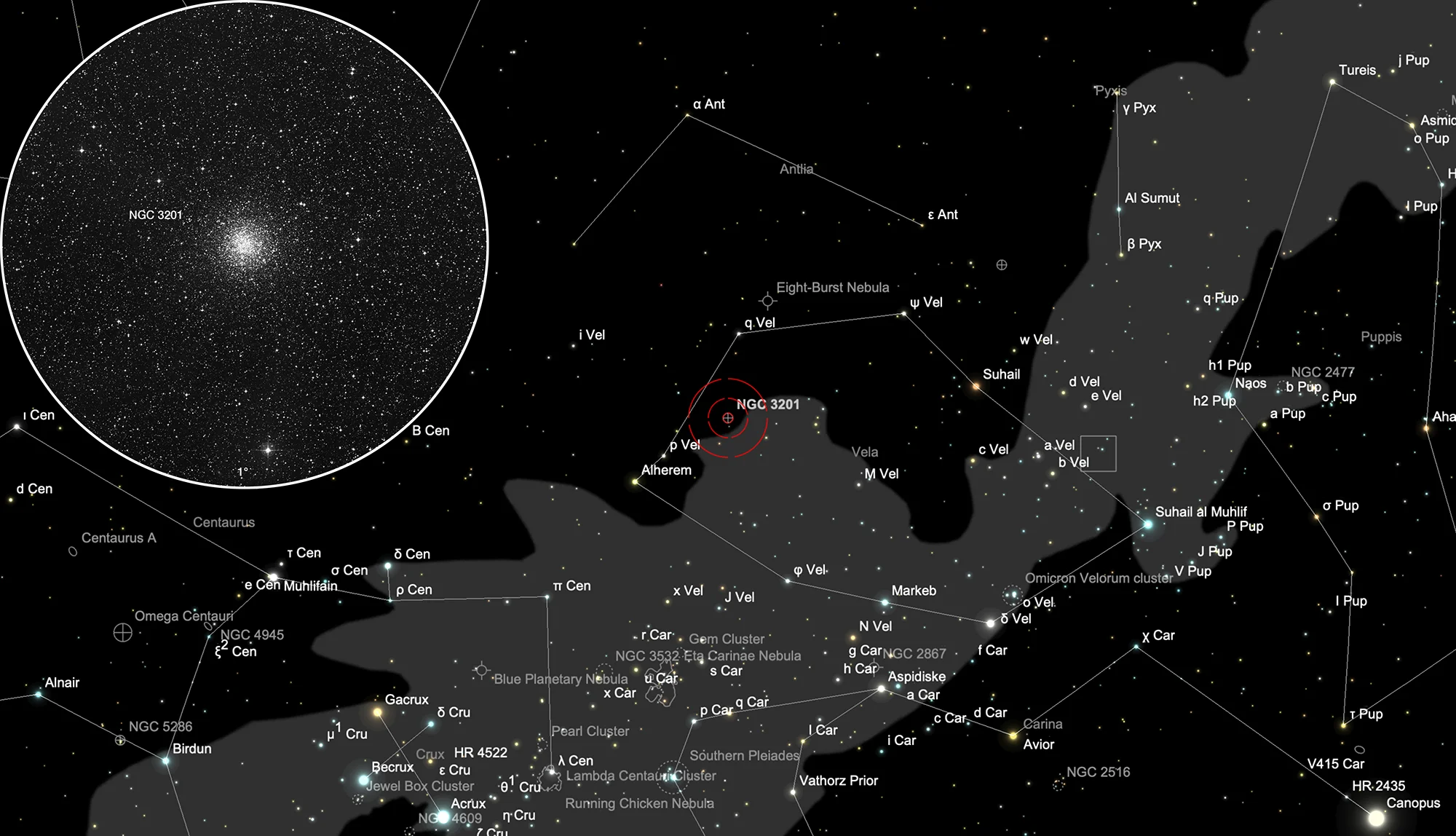Globular Cluster NGC 3201

History
Scottish astronomer James Dunlop discovered NGC 3201 on 1 May 1826 while observing with his 9-inch f/12 speculum reflector from Parramatta, NSW. He listed it as Δ 445, observed it five times and wrote: «A pretty large, pretty bright round nebula, 4' or 5' diameter, very gradually condensed towards the centre, easily resolved into stars; the figure is rather irregular, and the stars are considerably scattered on the south preceding side: the stars are also of slightly mixed magnitudes.» [50]
John Herschel observed this cluster from while sweeping the southern sky using his 18.3 inch telescope from Cape Town in South Africa. He listed this cluster as h 3238 and observed it two times. His notes for sweep 695 on 20 April 1836: «Globular cluster; irregularly round, gradually brighter in the middle, not very much compressed, 6', resolved into stars 13...15th mag.» On sweep 776 (3 March 1837) he noted: «Globular cluster; irregularly round, 7' diameter, but the outliers extend to at least 10' or 12'; gradually pretty much brighter middle, but not very much compressed; all resolved into stars 13..16th mag.» [11]
Physical Properties
| Designation | NGC 3201 |
| Type | GCL (X) |
| Right Ascension (J2000.0) | 10h 17m 36.8s |
| Declination (J2000.0) | -46° 24' 38" |
| Diameter | 20 arcmin |
| Visual magnitude | 6.9 mag |
| Metric Distance | 4.900 kpc |
| Dreyer Description | globular, vL, iR, lCM, st 13…16 |
| Identification, Remarks | h 3238; GC 2068; GCL 15; ESO 263-SC26 |
Finder Chart
The globular cluster NGC 3201 is located in the constellation Vela. Unfortunately it is not visible from Europe. On 22 February it in opposition with the Sun and is therefore highest in the sky at local midnight.
